Sun Facts – What is the Sun?
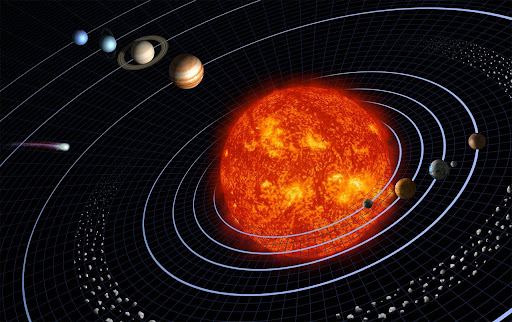
The Sun is the star at the center of our solar system. It is a big ball of gas and plasma that generates its own energy through nuclear fusion in its core. As our one and only star, it is the only natural source of light in the entire solar system.
The planets, dwarf planets, asteroids, comets, and other objects in the solar system orbit the Sun. The only exceptions are moons, which, in turn, orbit planets, dwarf planets, and even asteroids. Still, moons are also dependent on the Sun just like any other object.
The Sun provides us with the light and energy we need for life here on Earth. In the morning, when the Sun rises, our daily activities start as well.
At night, after the Sun sets, it is the Moon that shines the brightest in the sky. The Earth’s Moon, however, does not make its own light. It shines because of the light that it reflects from the Sun.
The Sun’s influence on our lives is all-encompassing. Most importantly, it makes photosynthesis possible, which is how plants make their food. The Sun is also responsible for the wind, the weather changes, ocean currents, and just about everything that makes life possible on Earth.
Even though the Sun is the most important star for us, it is just an ordinary star. In fact, it is just one of the billions of stars in the Milky Way alone. However, that does not make it less interesting.
Many missions have been sent to study the Sun closer. Spearheading the fleet is the Parker Solar Probe, which made history as the first spacecraft to “touch” the Sun. It has passed through the Sun’s corona and will continue to do flybys and studies to understand our Sun better.
Fun Facts About the Sun
- The Sun accounts for 99.86% of the mass in the solar system. It has a mass of around 330,000 times that of Earth. It is three-quarters hydrogen and most of its remaining mass is helium.
- Over one million Earths could fit inside the Sun. If you were to fill a hollow Sun with spherical Earths, somewhere around 960,000 would fit inside. However, if you squashed those Earths to ensure there was no wasted space then you could fit 1,300,000 Earths inside the Sun. The surface area of the Sun is 11,990 times that of Earth.
- One day the Sun will consume the Earth. The Sun will continue to burn for about 130 million years after it burns through all of its hydrogen, instead of burning helium. During this time it will expand to such a size that it will engulf Mercury, Venus, and Earth. When it reaches this point, it will have become a red giant star.
- The energy created by the Sun’s core is nuclear fusion. This huge amount of energy is produced when four hydrogen nuclei are combined into one helium nucleus.
- The Sun is almost a perfect sphere. Considering the sheer size of the Sun, there is only a 10 km difference in its polar and equatorial diameters—this makes it the closest thing to a perfect sphere observed in nature.
- The Sun is traveling at 220 km per second (137 miles per second). It is around 24,000–26,000 light-years from the galactic center. Also, it takes the Sun approximately 225–250 million years to complete one orbit of the center of the Milky Way.
- The Sun will eventually be about the size of Earth. Once the Sun has completed its red giant phase, it will collapse. Its huge mass will be retained, but it will have a volume similar to that of Earth. When that happens, it will be known as a white dwarf.
- It takes eight minutes for light to reach Earth from the Sun. The average distance from the Sun to the Earth is about 150 million km (93 million miles). Light travels at 300,000 km per second so dividing one by the other gives you 500 seconds or eight minutes and twenty seconds. This energy can reach Earth in mere minutes, but it takes millions of years to travel from the Sun’s core to its surface.
- The Sun is halfway through its life. At 4.5 billion years old, the Sun has burned off around half of its hydrogen stores and has enough left to continue burning hydrogen for another 5 billion years. Currently, the Sun is a yellow dwarf star.
- The distance between Earth and Sun changes. This is because the Earth travels on an elliptical orbit path around the Sun. The distance between the two ranges from 147 to 152 million km (91 to 94 million mi). This distance between them is one Astronomical Unit (AU).
- The Sun rotates in the same direction as the Earth. As viewed from the north, the Sun rotates in a counter-clockwise direction, from west to east, just like most of the planets, except Venus and Uranus.
- The Sun rotates more quickly at its equator than it does close to its poles. This is known as differential rotation.
- The Sun has a powerful magnetic field. When magnetic energy is released by the Sun during magnetic storms, solar flares occur which we see on Earth as sunspots. Sunspots are dark areas on the Sun’s surface caused by magnetic variations. The reason they appear dark is due to their temperature being much lower than surrounding areas.
- Temperatures inside the Sun can reach 15 million degrees Celsius (27 million °F). Energy is generated through nuclear fusion in the Sun’s core. This is when hydrogen converts to helium. And because objects generally expand, the Sun would explode like an enormous bomb if it were not for its tremendous gravitational pull.
- The Sun generates solar winds. These are ejections of plasma (extremely hot charged particles) that originate in the layer of the Sun known as the corona. They can travel through the solar system at up to 450 km per second.
- The atmosphere of the Sun is composed of three layers: the photosphere, the chromosphere, and the corona.
- The Sun is classified as a yellow dwarf star. It is a main-sequence star with surface temperatures between 5,000 and 5,700 degrees Celsius (9,000 and 10,300 degrees Fahrenheit).
- The Aurora Borealis and Aurora Australis are caused by the interaction of solar winds with Earth’s atmosphere.
The Sun As A Star
The Sun is what is known as a main-sequence star. It is a sphere composed primarily of two gases—hydrogen and helium.
Main-sequence stars have two characteristics.
The first one is that it must have a mass falling within a certain range. Though debated, this range is generally accepted to be between approximately 1.4 x 1029 kg and 3.0 x 1032 kg. This range is often described as at least 75 times the mass of Jupiter and no more than 150 times the mass of the Sun itself.
The second and most important condition is that nuclear fusion must be present. Nuclear fusion is the process whereby two lighter atomic nuclei join or “fuse” together to produce a heavier atomic nucleus. In the context of stars, hydrogen is the lighter and helium is the heavier.
Why Is the Sun Important?

The Sun is important for many reasons. The planets, asteroids, comets, and other astronomical objects remain in their orbits because of the Sun’s gravity. As the largest object in the solar system, it holds everything in place.
The Sun and Earth
On Earth, the Sun’s influence is very vital. It drives life on our planet and without it, we would not exist.
Plants and animals alike depend on the Sun for nourishment. The plants make food through the process of photosynthesis. Together with water and carbon dioxide, the Sun helps plants make glucose. Glucose is a type of sugar that serves as food for plants.
Aside from that, another product of photosynthesis is oxygen, which the plants give off. In turn, we humans inhale oxygen—which is very vital for us to live. This is why plants are often called the “lungs of the world.”
Plants in the oceans like phytoplankton and kelp also use sunlight for photosynthesis. Through them, the ocean produces more than half of the oxygen in the world. The ocean also absorbs a big part of carbon dioxide on Earth.
The Sun is also the main driver for the weather system on Earth, as well as the currents in our oceans. The heat from the Sun is distributed unevenly on Earth. Areas around the equator receive more direct sunlight so they are warmer than places near the poles.
The heat from the equator moves towards the poles and produces currents. This movement transports nutrients in the oceans and helps regulate the climate.
The Sun and Humans
For us humans, the day and night cycle is the basis for how we go about our day-to-day activities. We are considered diurnal beings because we are active during the day. The sunrise signals the start of our day and the sunset tells us it is time to rest.
Apart from regulating our body clock, the Sun also has a direct benefit on our overall health. It is good for the bones and helps improve our well-being.
Our bodies produce Vitamin D through direct sunlight exposure. It also helps in producing serotonin, a hormone that boosts our mood and makes us feel more energetic. However, as with all things, moderation is key here since too much Sun exposure can also lead to sunburn.
Structure and Layers of the Sun
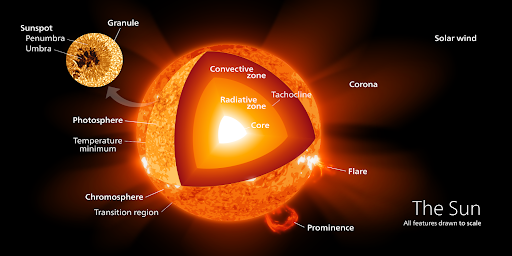
The Sun has different layers just like Earth. However, unlike Earth, it does not have a solid surface.
The inner layers of the Sun consist of the core, radiative zone, and convection zone. Its outer layers are made up of the photosphere and the atmosphere.
Core
The Sun’s core has a temperature of around 15 million °C or 27 million °F, making it the hottest part of the Sun. This is where nuclear fusion takes place, where hydrogen is converted into helium.
Radiative Zone
The radiative zone is located between the core and the convective zone. In this zone, energy is transferred through radiation or photon emission instead of through convection. It is separated from the convective zone through the tachocline.
Convective Zone
The convection zone of the Sun is less dense than the radiative zone. It brings energy outward through convective currents.
Photosphere
The photosphere is like the surface of the Sun that is directly visible for observation. The temperature of the Sun’s surface ranges from 6,200 to 3,700 °C (11,000 to 6700 degrees °F).
Atmosphere
The Sun has a halo that surrounds it called an atmosphere. We can easily see this atmosphere during a total solar eclipse when the Moon covers the Sun’s disk.
Our Sun’s atmosphere has three layers: chromosphere, transition region, and corona. With these outer layers, it actually gets hotter the farther you go from the Sun.
- Chromosphere
The chromosphere is located above the photosphere, or the Sun’s surface. The temperature in the Sun’s chromosphere ranges from 3700 to 7700 °C (6700 to 14,000 °F).
- Transition Region
The transition region separates the chromosphere and the corona. It is just a narrow region where the temperature is around 7700 to 500,000 °C (14,000 to 900,000 °F).
- Corona
The corona is the Sun’s outermost layer. The temperature around this outer layer is around 500,000 °C (900,000 °F) but can go up to millions of degrees.
Solar Features and Phenomena
Aside from the main parts of the Sun, our star also has other interesting features which scientists use to understand it better.
Sunspots
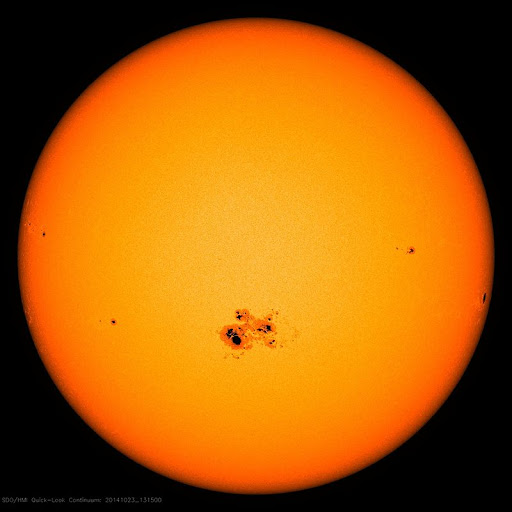
Sunspots are dark areas on the photosphere. These are cooler areas that appear darker than the rest of the Sun’s surface. Sunspots form in areas with strong magnetic fields. They are just temporary features though that last from days to months.
Scientists were able to detect the Sun’s rotation by observing sunspots.
Solar Flares
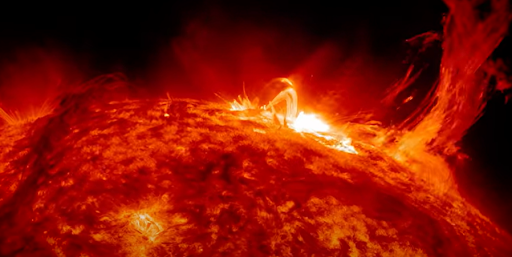
Solar flares are explosions on the Sun that occur when magnetic fields near sunspots get twisted. These brief explosions release high-energy radiation which can cause disturbances in radio communications and power lines on Earth.
Solar Prominences
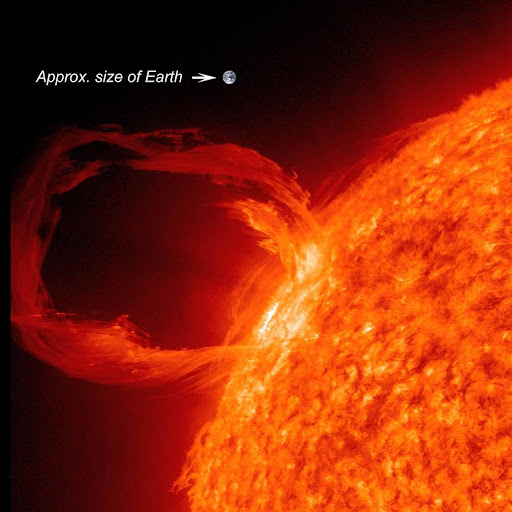
A solar prominence is an arc of plasma that is anchored to the surface of the Sun and extends to the corona. It can last for hours to months. A prominence is also called a “filament” when it is viewed against the Sun’s disk.
Characteristics of the Sun
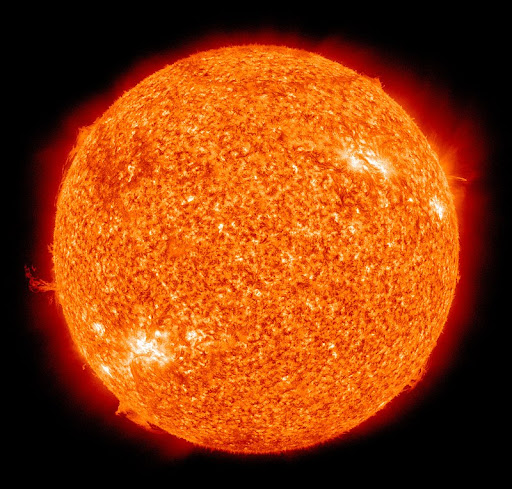
- Age: 4.6 Billion Years
- Type: Yellow Dwarf (G2V)
- Mass: 1,989,100,000,000,000,000, 000 billion kg (333,060 x Earth)
- Diameter: 1,392,684 km (109 x Earth)
- Circumference at the Equator: 4,370,005.6 km
- Surface Temperature: 5,500 °C
- Internal Temperature: 15 million °C
- Composition: 72% Hydrogen, 26% Helium
- Energy output: Solar Radiation
- Rotation: 27 days
- Revolution: 225 to 250 million years
- Sunlight Travel Time: 8 minutes to reach Earth
- Apparent Magnitude: −26.74
The Sun is a medium-sized star, with the stellar classification of G2V or yellow dwarf. It is more than 300,000 times as massive as Earth and about 110 times as large. It is hottest at its core where the temperature reaches millions of degrees celsius.
As a main-sequence star, the Sun makes energy by turning hydrogen to helium. Hydrogen accounts for more than 70% of its composition and 26% of it is helium. The remaining gases are trace amounts of oxygen, carbon, iron, neon, nitrogen, silicon, magnesium, and sulfur.
The Sun produces solar radiation which takes about 8 minutes to reach Earth. For Mercury, the closest planet, it only takes 3.2 minutes. Meanwhile, sunlight takes 4 hours to reach Neptune, the farthest planet from the Sun.
With an astounding apparent magnitude of −26.74, the Sun is definitely the brightest object in our sky. It is followed by the Moon, which has an apparent magnitude of -12.74.
The Sun’s Age: How Old Is the Sun?
The Sun is 4.6 billion years old. It is about halfway through its life as a yellow dwarf star in the main sequence. Stars like the Sun spend 10 billion years as main-sequence stars. If it were 10 times more massive than it is now, it will only spend 20 million years as a main-sequence star.
The Sun generates energy through nuclear fusion in its core, by converting hydrogen to helium. After 10 billion years, it would have depleted most of its hydrogen. When that time comes, it would enter the red giant phase and stay there for about a billion years.
As a red giant, the Sun would expand to about 256 times its size now. It would swallow the inner planets (Mercury, Venus, Earth, and Mars). Also, the habitable zone would move farther around the Kuiper Belt area.
Size of the Sun
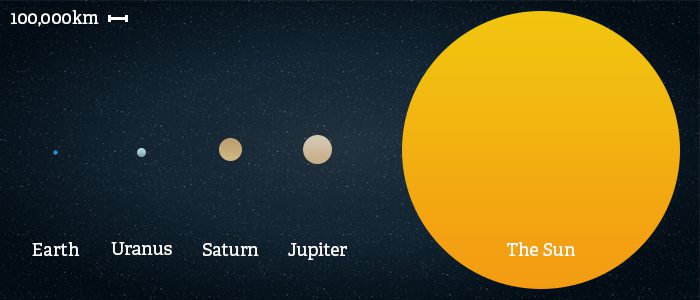
The size of the Sun compared to the largest known stars (red giants) is not very big. However, if compared to the most common type of star in the universe, the red dwarf, the Sun is quite a bit larger. Thus, the Sun is not the biggest type of star in the universe, but it is definitely larger than most.
As far as the Sun’s mass compared to other bodies found in our solar system, the Sun is easily the most massive. The Sun alone contains 99.8% of the total mass in the Solar System.
In terms of size, the Sun has a diameter of roughly 1.4 million kilometers (870,000 miles). To put this in perspective, this is almost 110 times the diameter of the Earth. What this means is that about one million Earth’s could fit inside the Sun.
Sun’s Rotation and Revolution
Just like the planets that surround it, the Sun also rotates and orbits around something. It rotates on its axis every 27 days or so.
However, the Sun is a gaseous ball and it does not have a solid surface like the terrestrial planets. With that said, different areas of the Sun have different exact rotational periods. This is called “differential rotation” and is also observed on the gas giant planets.
The Sun rotates the fastest in its equatorial region which takes only roughly 24 days. It rotates more slowly farther away from the equator. It takes around 35 days for the Sun’s polar regions to rotate.
The Sun orbits around the center of the Milky Way Galaxy. One revolution takes 225 to 250 million years!
As you see, the Sun takes a very long time to orbit the galactic center. We refer to this period as a “cosmic year” or a “galactic year.” So far, the Sun has only orbited the Milky Way 20 times.
A Review: Types of Stars
A star’s color can tell us a lot about a star. A stellar classification system was created by American astronomer Annie Jump Cannon to identify stars based on their color and surface temperature.

The stars in the classification system become cooler as their colors go from blue to red. Blue stars or O-type stars have temperatures around 25,000–50,000 K. They are the hottest stars out there. At the other end of the spectrum are red or M-type stars. Stars of this type have temperatures around 2,400–3,700 K.
Aside from spectra, we also determine the types of stars based on their size and where they are in the stellar evolution. These types are protostar, T Tauri star, main-sequence star, red dwarf, red giant, white dwarf, supergiant, and neutron stars.
Protostars
Protostars are very young stars that are still in the process of gathering mass from their molecular cloud. They form when the collection of gas first collapses and a core is formed.
These baby stars still have around 0.01 times the mass of the Sun, but they are continually accreting material for about 100,000 years or so. Stars at this stage are hard to observe because they are still surrounded by thick clouds. Also, nuclear fusion has not taken place yet.
T Tauri Stars
T Tauri stars follow the protostar phase. They are not yet able to generate energy through fusion. Instead, they are powered by the gravitational pressure from their continued collapse. These new stars begin to generate strong winds that blow away the surrounding gases.
Main-Sequence Stars
When stars finally start to convert hydrogen to helium, they have finally become main-sequence stars. This happens when the star has achieved adequate mass to support fusion in its core.
Most of the stars in the universe are main-sequence stars including our Sun.
Red Dwarf Stars
Red dwarfs are main-sequence stars that are much smaller and cooler than our Sun. Stars of this type are the most efficient when it comes to nuclear fusion. Because of this, they are the longest-living stars capable of sustaining hydrogen fusion for trillions of years. They are the most common stars in our galaxy. Notable examples of Red Dwarves include Barnard’s Star in the constellation of Ophiuchus.
Red Giant Stars
The red giant phase follows the main-sequence stage. Stars enter this stage when they have used up their hydrogen supply in their cores.
Red giants are still able to generate energy through the hydrogen shell around their cores. After that, it will use helium and heavier elements for fuel. Stars at this stage will become much bigger. The red color indicates that they have cooler surface temperatures. Notable examples of Red Giants include Arcturus Star and Aldebaran Star.
White Dwarf Stars
White dwarfs are in the last stages of stellar evolution, when they are not able to support fusion anymore. Stars of this type still shine because of the heat that is left when it was still generating energy.
Because they no longer produce energy, white dwarfs will continue to cool down for billions of years.
Supergiant Stars
As the name suggests, supergiant stars are the largest and most massive stars in the universe. These stars are very bright because they consume big amounts of their hydrogen fuel. Due to this, supergiants are also short-lived compared to other star types.
Neutron Stars
Unlike giant stars, supergiants do not become white dwarfs when they die. Instead, they cause a big explosion called a supernova. Neutron stars come from that explosion. They are very dense and were once the core of the supergiant stars.
Sun Facts – How the Sun and Other Stars Form
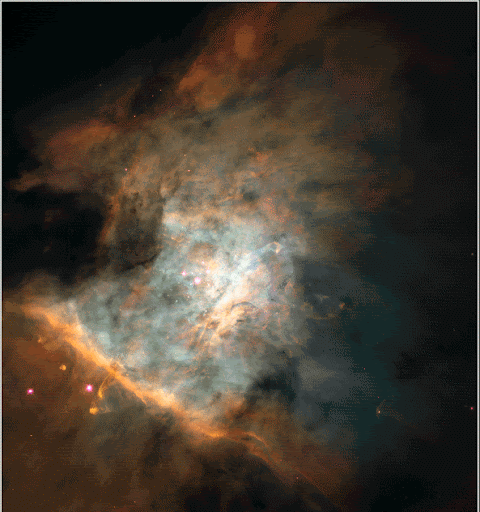
Though stars differ in size and other characteristics, they are generally formed by the same process.
Galaxies are made up of clouds and dust moving through space. Over time, these materials can contract and pile up to form clouds. These clouds start to collapse in their own gravity due to turbulence from within.
Other factors that help in their collapse are supernova shock waves and the Milky Way’s rotation. These external processes compress the interstellar clouds and initiate their collapse.
As the interstellar clouds continue to collapse, they form dense cores. These cores will continue to increase in size, and eventually, start to produce heat. At this stage, they are called protostars.
The cloud will continue to spin and collapse and later on, it will eject the leftover materials. The main-sequence phase will follow when the stars are finally able to support nuclear fusion. Some of the materials in the cloud can form into other objects like planets, comets, or asteroids.
However, not all collapsing clouds become stars. If the star-to-be is too small or less than 0.08 times the mass of the Sun, it will be a brown dwarf. Brown dwarfs are failed stars that are not massive enough to sustain nuclear fusion.
What Type of Star Is the Sun?
Although we think of our Sun as a unique celestial body, it is, in fact, one of the trillions of stars in the universe.
On top of this, the Sun is rather ordinary as far as stars go. The official classification for our Sun is G V star (often referred to as a yellow dwarf star). This means that it is a main-sequence star whose surface temperature is between 5,027°C and 5,727°C.
Some estimates for stars similar to the Sun in the Milky Way galaxy alone are as high as 7 billion. If this number is correct, there could be over one trillion stars that are roughly the same as our Sun in the universe.
Sun Facts – Space Missions to the Sun
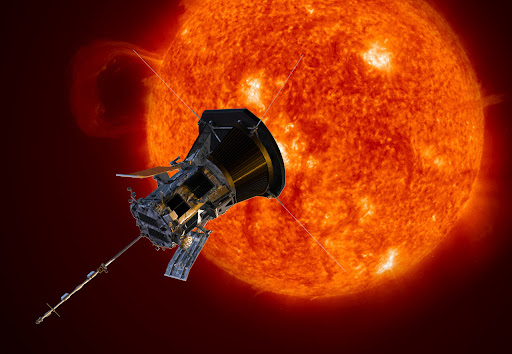
Many space probes have been sent to study our only star. The Sun does not have a solid surface so we cannot send missions for landing. It is also very hot which makes it a great challenge to have a close-up peek into this big burning fireball.
Still, that does not limit us from exploring the Sun from afar. And with the advancements made over the years, NASA’s Parker Solar Probe has even gone as close to “touching” the Sun’s surface.
Many Sun-watching spacecraft are still operational. Examples are the Solar Orbiter, Advanced Composition Explorer (ACE), Interface Region Imaging Spectrograph (IRIS), the Wind Spacecraft, Solar Terrestrial Relations Observatory (STEREO), the Hinode Satellite, and the Solar Dynamics Observatory.
Below are some other missions sent to learn more about the Sun.
Pioneer 5
The Pioneer 5 orbiter was launched in 1960 to study the interplanetary space between Venus and Earth. It was supposed to head to Venus but it changed route and entered the solar orbit instead.
During its 3-month course, it was able to obtain useful information about solar flares and the magnetic field phenomena.
Ulysses
In October 1990, NASA partnered with ESA (European Space Agency) to launch the Ulysses spacecraft. It was a highly successful mission that lasted for nearly 19 years. It studied the solar wind and the Sun’s magnetic field, among others.
Ulysses was the first spacecraft to study the Sun from above and below its poles. It had a couple of mission extensions throughout its course where it also encountered three comet tails.
Geotail
The still-active Geotail satellite is a joint mission by Japan and the USA. It studies the Earth’s magnetosphere and how it reacts with the particles coming from the Sun. The spacecraft launched in 1992 and has been operating for about 30 years.
SOHO
Another record-breaking mission is the SOHO or Solar and Heliospheric Observatory. It is the longest-running satellite that focuses on the Sun. It has been operating for more than 25 years and has observed two solar cycles.
SOHO has returned important data about the Sun’s corona, its core, and space weather.
Parker Solar Probe
The Parker Solar Probe has been the closest we have ever been to the Sun yet. Flying at a speed of around 700,000 kph (430,000 mph), it has reached the Sun’s corona in December 2021. This is a great first which means that a man-made spacecraft has finally “touched” the Sun.
The probe sent valuable data and images as it entered the Sun’s outer atmosphere. It was bombarded by jets of plasma as it entered the corona. Among its many findings are about the “switchback” of solar winds and magnetic field changes around the coronal area.
Sun Facts – How To View the Sun
Whether there is a solar eclipse or not, never ever look at the Sun directly. Looking at the Sun burns your retina and can even cause blindness. However, there are many ways that we can view unique Sun phenomena such as the solar eclipse.

The easiest way to view the Sun is through pinhole projection. What you need are just two pieces of white paper and a pin for this indirect viewing technique.
Put one piece of paper on the ground and hold the other in your hands. Use the pin to punch a hole in the paper on your hand. Hold it above the paper on the ground and you can see a small projection of the Sun.
Aside from that, you can also watch the solar eclipse unfold by viewing it online. That is one sure way you will not harm your eyes from the Sun’s rays!
Lens and Filter for Viewing and Imaging the Sun
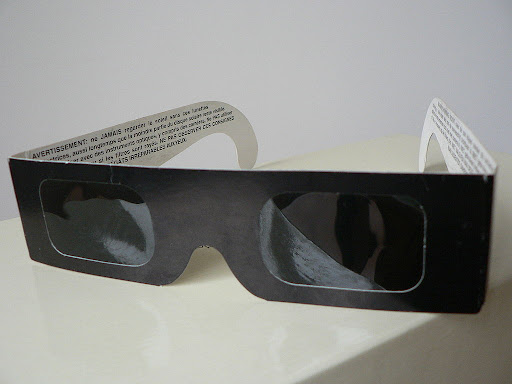
Another way you can safely view the Sun during a solar eclipse is by using solar eclipse glasses. The Sunspotter is also a fantastic way to keep track of sunspots and the Sun as a whole.
You can use your telescope for viewing the Sun but you have to use filters to do so. Looking at the Sun directly through your telescope can still cause damage to your eyes. If you want to use your telescope, you have to use a solar filter.
You can also use #14 welder’s glass or darker than that. Like the paper solar eclipse glasses, it is a great way to view the eclipse directly.
How Not To View the Sun
Use only the advised methods to view the Sun. The following are the things you should not use when doing solar observations:
❌Regular sunglasses
❌X-ray film
❌Smoked glass
❌Polaroid filters
❌Exposed color negative film
❌Camera lens
❌Binoculars
❌Telescope (not directly)
The Sun’s History
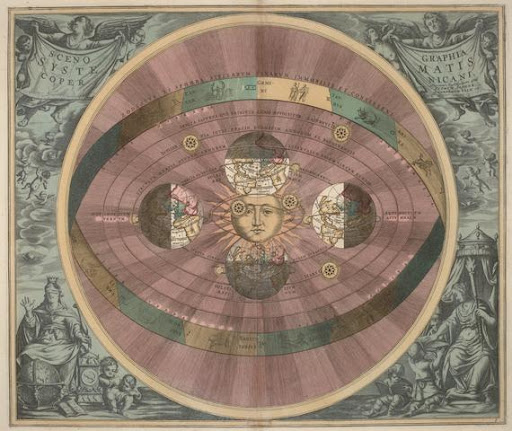
The Sun has been known to people ever since. However, it has not been as deeply studied before as it is today. Observations of the Sun started around the 17th century when the telescope was invented.
Before that, Aristotle’s idea of a geocentric world was the widely accepted concept. For about a thousand years, people thought that the Earth was stationary and that everything revolved around it, including the Sun. It was also deeply adopted by Christian theology, which made it more difficult to challenge.
Around the early 1500s, Nicolaus Copernicus posited the heliocentric model. It states that the Sun is the center of the Solar system and the Earth revolves around it, just like the other planets. His theory was highly condemned especially by the church. Those who share his ideas were even punished too.
Everything changed on January 7, 1610, when Galileo Galilei used his telescope to observe sunspots and the biggest moons of Jupiter. These moons, Ganymede, Callisto, Io, and Europa, later became known as the Galilean moons. These moons were orbiting Jupiter, so it disproved the earlier belief that everything in the solar system revolves around Earth.
Johannes Kepler’s mathematical equations also supported this which made the heliocentric claim even stronger. Isaac Newton finalized this in 1687 with the concept of gravity and his Laws of Motion, finally saying goodbye to the old geocentric view of the world.
Because of the works and efforts of many scientists over time, we now know that the Sun is indeed the center of our solar system.
Mythology About the Sun

As the grandest object in our sky, the Sun is often represented as an important deity across many cultures.
In ancient Egyptian mythology, the Sun was associated with the god Ra. The deity had the Sun on his head as he travels in the sky using a solar barque (boat).
Chariots are also related to the Sun in many world mythologies. In Norse culture, the goddess Sól has a chariot that was pulled by the two horses Arvak and Alsvid.
In Greek mythology, Helios was the Sun god who drove his chariot in the sky every morning to signal the start of the day. Phaethon wanted proof that he really was Helios’s son and asked to drive the chariot. Helios wanted his son to be happy so he obliged.
Unfortunately, Phaeton lost control and burned the Earth, which made Africa into a desert. Zeus was left with no choice so he struck the young man with his lightning bolt to stop him from further destroying Earth.
More Interesting Sun Facts
- There is a particular area in science that specifically studies the Sun—called heliophysics. It deals with the Sun’s nature and how it influences the solar system.
- While the Earth orbits only one star, the Sun, some exoplanets actually orbit multiple stars. Some examples are Kepler-34b which orbits a binary star and Kepler-64b which is in a 4-star system.
- The Sun can fit all the 8 planets in the solar system, but about 600 times more of that!
- The largest known star is the red hypergiant Stephenson 2-18. It has 2,150 times the solar radius and shines about 500,000 times the brightness of the Sun.
- After the Sun, Sirius the dog star is the next brightest star in our night sky. Its apparent magnitude is −1.46, making it 13 billion times less bright than the Sun. However, this is only because the Sun is much closer to us. As an A-type star, Sirius is actually much hotter than the Sun.
While our Sun does not have an official scientific name, it does have another common name: Sol.
This name originates from the ancient Roman god of the Sun, Sol. This alternate name is where we get the term “solar system,” which literally means the system of the Sun.
The Sun has a diameter of 1,392,684 km. That is the equivalent of 109 Earth diameters!
The Sun is a G-Type Main Sequence Star. Often described as being a Yellow Dwarf but this is not entirely accurate.
The Sun has a mass of 1,989,100,000,000,000,000, 000 billion kg. That’s the equivalent of 333,060 Earths!
Sun Facts Sources:
https://www.nationalgeographic.org/encyclopedia/ocean-currents/
https://lightcolourvision.org/resource-library/facts-about-the-sun/
https://www.nasa.gov/mission_pages/sunearth/science/solar-rotation.html
https://www.nasa.gov/mission_pages/iris/multimedia/layerzoo.html
(https://www.nasa.gov/content/goddard/what-is-a-solar-prominence)
(https://www.universetoday.com/24299/types-of-stars/)
http://ircamera.as.arizona.edu/NatSci102/NatSci102/lectures/starform.htm
https://science.nasa.gov/astrophysics/focus-areas/how-do-stars-form-and-evolve
https://en.wikipedia.org/wiki/List_of_Solar_System_probes#Solar_probes
https://solarsystem.nasa.gov/missions/
https://solarsystem.nasa.gov/solar-system/sun/exploration/
https://solarsystem.nasa.gov/missions/parker-solar-probe/in-depth/
http://solar-center.stanford.edu/observe/#sunfunnel
(https://earthsky.org/astronomy-essentials/how-to-watch-a-solar-eclipse-safely/)
https://earthobservatory.nasa.gov/features/OrbitsHistory
https://en.wikipedia.org/wiki/Sun
Sun Facts Image Sources:
What is the sun: https://upload.wikimedia.org/wikipedia/commons/thumb/c/c3/Solar_sys8.jpg/1280px-Solar_sys8.jpg
Importance: https://images.pexels.com/photos/1089168/pexels-photo-1089168.jpeg?auto=compress&cs=tinysrgb&dpr=2&h=650&w=940
Layers: https://upload.wikimedia.org/wikipedia/commons/thumb/d/d4/Sun_poster.svg/1920px-Sun_poster.svg.png
Sunspots: https://upload.wikimedia.org/wikipedia/commons/thumb/f/f8/NASA%27s_SDO_Observes_Largest_Sunspot_of_the_Solar_Cycle_%2815430820129%29.jpg/800px-NASA%27s_SDO_Observes_Largest_Sunspot_of_the_Solar_Cycle_%2815430820129%29.jpg
Solar flares: https://www.nasa.gov/content/goddard/nasa-releases-images-of-mid-level-solar-flare/
Solar prominence: https://www.nasa.gov/sites/default/files/styles/full_width_feature/public/thumbnails/image/faq1.jpg
Charactristics: https://upload.wikimedia.org/wikipedia/commons/thumb/b/b4/The_Sun_by_the_Atmospheric_Imaging_Assembly_of_NASA%27s_Solar_Dynamics_Observatory_-_20100819.jpg/800px-The_Sun_by_the_Atmospheric_Imaging_Assembly_of_NASA%27s_Solar_Dynamics_Observatory_-_20100819.jpg
How the Sun and Other Stars Form (orion nebula) https://d2pn8kiwq2w21t.cloudfront.net/original_images/imagessolarsystemorion_nebula-browse.gif
Space missions: https://solarsystem.nasa.gov/system/content_pages/main_images/1708_Parker-Solar-Probe_ObservingSun_1280.jpg
How to view the Sun: http://solar-center.stanford.edu/observe/images/pinhole-projection.jpg
Solar eclipse glasses: https://upload.wikimedia.org/wikipedia/commons/thumb/2/23/Eclipsbrilletje.JPG/1024px-Eclipsbrilletje.JPG
Sun’s history: https://upload.wikimedia.org/wikipedia/commons/5/57/Heliocentric.jpg
Mythology: https://sites.google.com/site/godofthesunhelios/_/rsrc/1360767002333/home/helios-vs-apollo/helios-greek-god/Helios.png